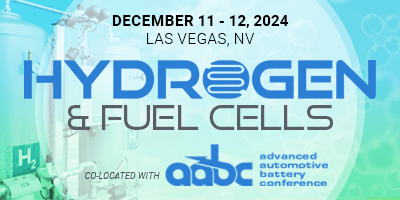Cambridge EnerTech’s
Hydrogen & Fuel Cells
Hydrogen Fueling a Zero-Emissions Future
December 13-14, 2023 | Co-Located with AABC
Hydrogen has seen a global surge in popularity due to its impressive energy to weight ratio and promise to help reach zero-emission transportation goals. Domestically, California is leading the charge in terms of decarbonization and hydrogen scale-up. California has committed to replace all in-state sales of new passenger cars and trucks with zero-emission vehicles by 2035. This year's Hydrogen & Fuel Cells meeting will provide insight into the current hydrogen market from funding and policies to sourcing and infrastructure. As a co-locate with the 23rd annual Advanced Automotive Battery Conference, hydrogen fuel cell technologies and policies will also be covered.
Wednesday, December 13
Registration Open7:45 am
Organizer's Welcome Remarks2:00 pm
Victoria Mosolgo, Conference Producer, Cambridge EnerTech
HYDROGEN INFRASTRUCTURE
Infrastructure and Hydrogen Hubs
 Leslie Goodbody, Engineer, California Air Resources Board
Leslie Goodbody, Engineer, California Air Resources Board
Examining the intersection of modern infrastructure development and the emerging hydrogen economy, this talk covers the establishment of hubs leveraging hydrogen's clean energy potential. Emphasizing its pivotal role in decarbonizing diverse sectors, the discussion also addresses the accompanying infrastructure complexities and prospects for a sustainable future.
Refreshment Break in the Exhibit Hall with Poster Viewing (Sponsorship Opportunity Available)3:20 pm
HYDROGEN PRODUCTION
Hydrogen—The Flexible Energy Source to Accelerate Decarbonization
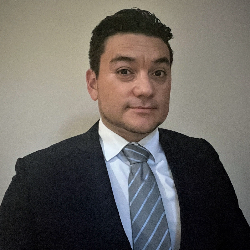 Juan Carlos Galdamez, Director, Customer Programs, Plug Power
Juan Carlos Galdamez, Director, Customer Programs, Plug Power
The versatility of hydrogen as a catalyst for accelerated decarbonization is explored. This discussion goes into hydrogen's diverse applications and pivotal role in the clean energy transition, offering insights into its potential to drive a sustainable, low-carbon future.
Carbon Intensity of Hydrogen Production and End-Use Applications with the GREET Model
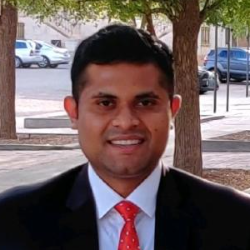 Pradeep Vyawahare, PhD, Energy Systems Analyst, Argonne National Laboratory
Pradeep Vyawahare, PhD, Energy Systems Analyst, Argonne National Laboratory
This presentation will provide an overview of well-to-gate carbon intensity of hydrogen production using the Greenhouse gases, Regulated Emissions, and Energy use in Technologies (GREET) model, developed by Argonne National Laboratory (ANL). The presentation will cover decarbonization potential of various end use applications of clean hydrogen supply.
Houston To Los Angeles (H2LA) – I-10 Hydrogen Corridor Project
 Bart Sowa, Research and Development, Manager, GTI Energy
Bart Sowa, Research and Development, Manager, GTI Energy
Transportation generates 33% of the U.S. Greenhouse Gases (GHGs), and medium and heavy vehicles are responsible for 21% of the transportation emissions. The challenge of introducing a decarbonized energy economy, will in part, require the development of an electric- and hydrogen-based commercial vehicle ecosystem, displacing the dependence of the industry on diesel fuel. Bart will present Houston To Los Angeles (H2LA) – I-10 Hydrogen Corridor Project, a multi-stakeholder planning effort focusing on the development of a nationally scalable, hydrogen fueling station infrastructure deployment planning process.
Close of Day5:10 pm
Thursday, December 14
Registration and Morning Coffee8:30 am
COST MODELING
Cost-Effective Infrastructure Deployment
 Michael C. Lewis, Senior Engineering Scientist, Center for Electromechanics, University of Texas, Austin
Michael C. Lewis, Senior Engineering Scientist, Center for Electromechanics, University of Texas, Austin
Hydrogen is a versatile clean energy carrier that can help solve the world's future energy needs where equitable access to low-carbon energy sources are needed to mitigate the impacts of climate change. Clean hydrogen can play a role in grid scale energy storage, as well as decarbonizing many hard to abate industries where pure electrification may not be practical.
Mr. Lewis will provide an overview of the role and potential for hydrogen energy storage, including UT’s efforts on a DOE H2@Scale project that is developing a first-of-its-kind hydrogen proto-hub research facility.
How to Solve the Conundrum of Cost Reduction and Prolonged Lifetime in PEM Fuel Cell Systems
 Michael Harenbrock, PhD, Principal Expert, Engineering Electric Mobility, MANN+HUMMEL GmbH
Michael Harenbrock, PhD, Principal Expert, Engineering Electric Mobility, MANN+HUMMEL GmbH
To achieve widespread adoption of PEM fuel cell technology in the transportation sector, cost and lifetime requirements, e.g. as defined by the DOE, must be met. Economies-of-scale and volume bundling are essential to lower the cost for BoP components, leading to standardized, yet flexible market products. To enhance the system´s lifetime, degradation caused by contamination, e.g. catalyst poisoning by harmful gases, must be prevented by application-based design of cathode air filters. The presentation will explain and demonstrate the market product approach and provide a detailed perspective on filtration and separation in PEM fuel cell systems and beyond
PEM Electrolyzers
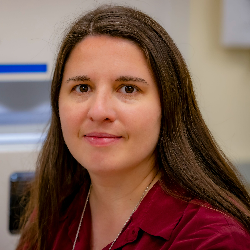 Iryna V. Zenyuk, Associate Professor, Chemical & Biomolecular Engineering, University of California Irvine
Iryna V. Zenyuk, Associate Professor, Chemical & Biomolecular Engineering, University of California Irvine
The U.S. has pledged to decarbonize its economy by 2050. Decarbonization of transportation sector is critical to achieve net-zero emissions economy by 2050. Department of Energy (DOE) has issued Hydrogen Shot aiming to produce 1 kg of hydrogen for $1 in 1 decade. This target is ambitious, as currently challenges of electrolyzers cost, durability, and scale-up to MW scale need to be addressed. Proton exchange membrane water electrolyzers are promising technologies to reach these targets. The widespread deployment of these technologies is stifled today by high catalyst cost and high catalyst loadings.
Coffee Break in the Exhibit Hall with Poster Viewing11:00 am
MEDIUM & HEAVY-DUTY APPLICATIONS
H2@Rescue: A Novel Fuel Cell-Powered Emergency Vehicle
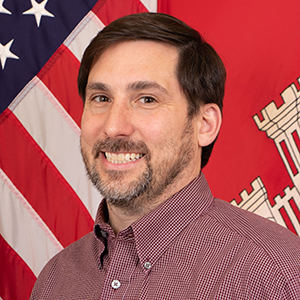 Nicholas M. Josefik, Mechanical Engineer, US Army Construction Engineering Research Lab
Nicholas M. Josefik, Mechanical Engineer, US Army Construction Engineering Research Lab
H2@Rescue, our zero-emission fuel cell-powered emergency vehicle capable of driving 180 miles round trip, providing 25 kW load-following exportable power for 72 hours on a single tank of hydrogen. The boxed bed is climate-controlled and acts as a mobile command center or warming/cooling shelter. H2@Rescue, which produces water for use during the emergency, is a class 7 medium-duty truck weighing ~33,000 lbs. carrying 176kg of hydrogen at 700bar.
Toyota HD Truck Related Activities
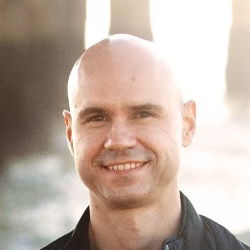 Genis Turon, PhD, Senior Principal Engineer, Vehicle Electrification, Toyota North America
Genis Turon, PhD, Senior Principal Engineer, Vehicle Electrification, Toyota North America
Hydrogen fuel cells are becoming the zero-emission technology of choice for heavy-duty longer-range applications. Toyota will give an overview of the development history as well as information on their latest efforts towards commercialization of next-generation hydrogen fuel cell products.
Networking Lunch (Sponsorship Opportunity Available)12:50 pm
Dessert Break in the Exhibit Hall with Poster Viewing — Last Chance for Viewing (Sponsorship Opportunity Available)2:00 pm
ELECTROLYSIS
Enhanced Water Electrolysis Using Layered Coaxial Nanowire Electrodes
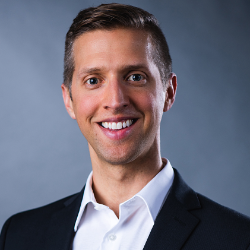 Jacob S. Spendelow, Scientist, Los Alamos National Laboratory
Jacob S. Spendelow, Scientist, Los Alamos National Laboratory
To enhance hydrogen production efficiency in PEM water electrolyzers, the innovative Layered Coaxial Nanowire Electrode (LCANE) has surfaced. LCANE electrodes incorporate vertically-aligned coaxial nanowires adorned with Pt and IrO2 clusters on the Pt shell, improving electronic conductivity and transport efficiency. Remarkably, LCANE achieves a significant reduction in Ir loading, as low as 0.1 mg/cm², without compromising performance, offering a compelling avenue for advancing PEM electrolysis technology.
Electronic Structure Studies of Graphene and Graphene Based Functional Materials by Soft X-Ray Absorption Spectroscopy and Spectromicroscopy at Canadian Light Source
 Jigang Zhou, PhD, Senior Industrial Scientist, Industry Services, Canadian Light Source, Inc.
Jigang Zhou, PhD, Senior Industrial Scientist, Industry Services, Canadian Light Source, Inc.
Understanding graphene's electronic structure for fuel cells is crucial. X-ray absorption (XANES) offers insights into chemistry. Soft X-rays yield surface (5-10 nm) and subsurface (100 nm) details, even operando. Scanning transmission X-ray microscopy (STXM) provides nanoscale chemical imaging, linking structure to performance. This talk at CLS highlights XANES and STXM/PEEM, focusing on C and O K-edge and transition metal L-edge XANES for non-precious metal fuel cell catalysts.
Low-Cost Metal Substrate Coatings for Electrolysis
 Conghua Wang, PhD, CTO, TreadStone Technologies
Conghua Wang, PhD, CTO, TreadStone Technologies
Advancements in the development of cost-effective coatings for metal substrates in electrolysis processes will be covered. We introduce innovative techniques and materials that promise to enhance the efficiency and affordability of critical hydrogen production methods.
Close of Conference4:05 pm
